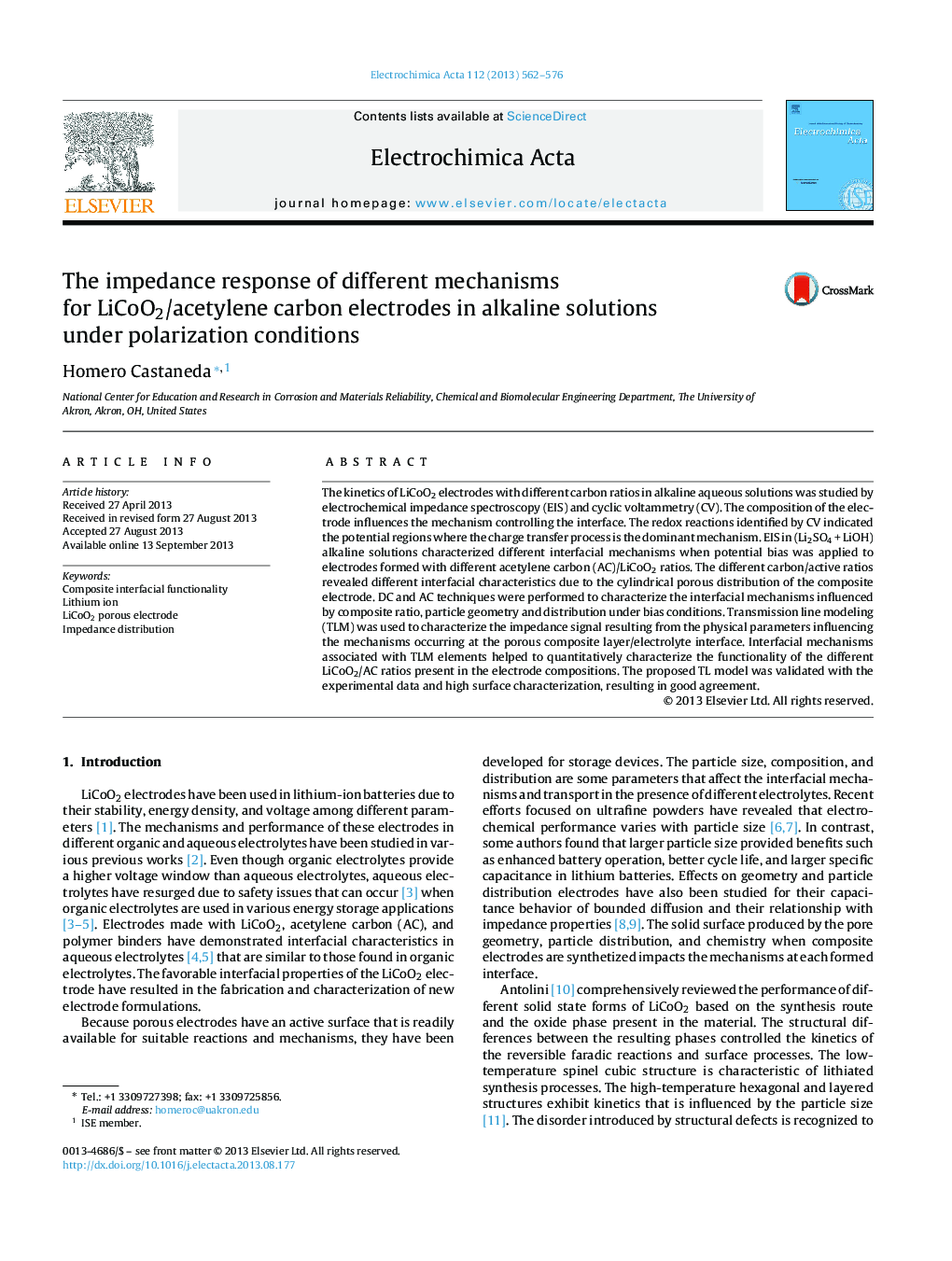| Article ID | Journal | Published Year | Pages | File Type |
|---|---|---|---|---|
| 6615112 | Electrochimica Acta | 2013 | 15 Pages |
Abstract
The kinetics of LiCoO2 electrodes with different carbon ratios in alkaline aqueous solutions was studied by electrochemical impedance spectroscopy (EIS) and cyclic voltammetry (CV). The composition of the electrode influences the mechanism controlling the interface. The redox reactions identified by CV indicated the potential regions where the charge transfer process is the dominant mechanism. EIS in (Li2SO4Â +Â LiOH) alkaline solutions characterized different interfacial mechanisms when potential bias was applied to electrodes formed with different acetylene carbon (AC)/LiCoO2 ratios. The different carbon/active ratios revealed different interfacial characteristics due to the cylindrical porous distribution of the composite electrode. DC and AC techniques were performed to characterize the interfacial mechanisms influenced by composite ratio, particle geometry and distribution under bias conditions. Transmission line modeling (TLM) was used to characterize the impedance signal resulting from the physical parameters influencing the mechanisms occurring at the porous composite layer/electrolyte interface. Interfacial mechanisms associated with TLM elements helped to quantitatively characterize the functionality of the different LiCoO2/AC ratios present in the electrode compositions. The proposed TL model was validated with the experimental data and high surface characterization, resulting in good agreement.
Keywords
Related Topics
Physical Sciences and Engineering
Chemical Engineering
Chemical Engineering (General)
Authors
Homero Castaneda,
